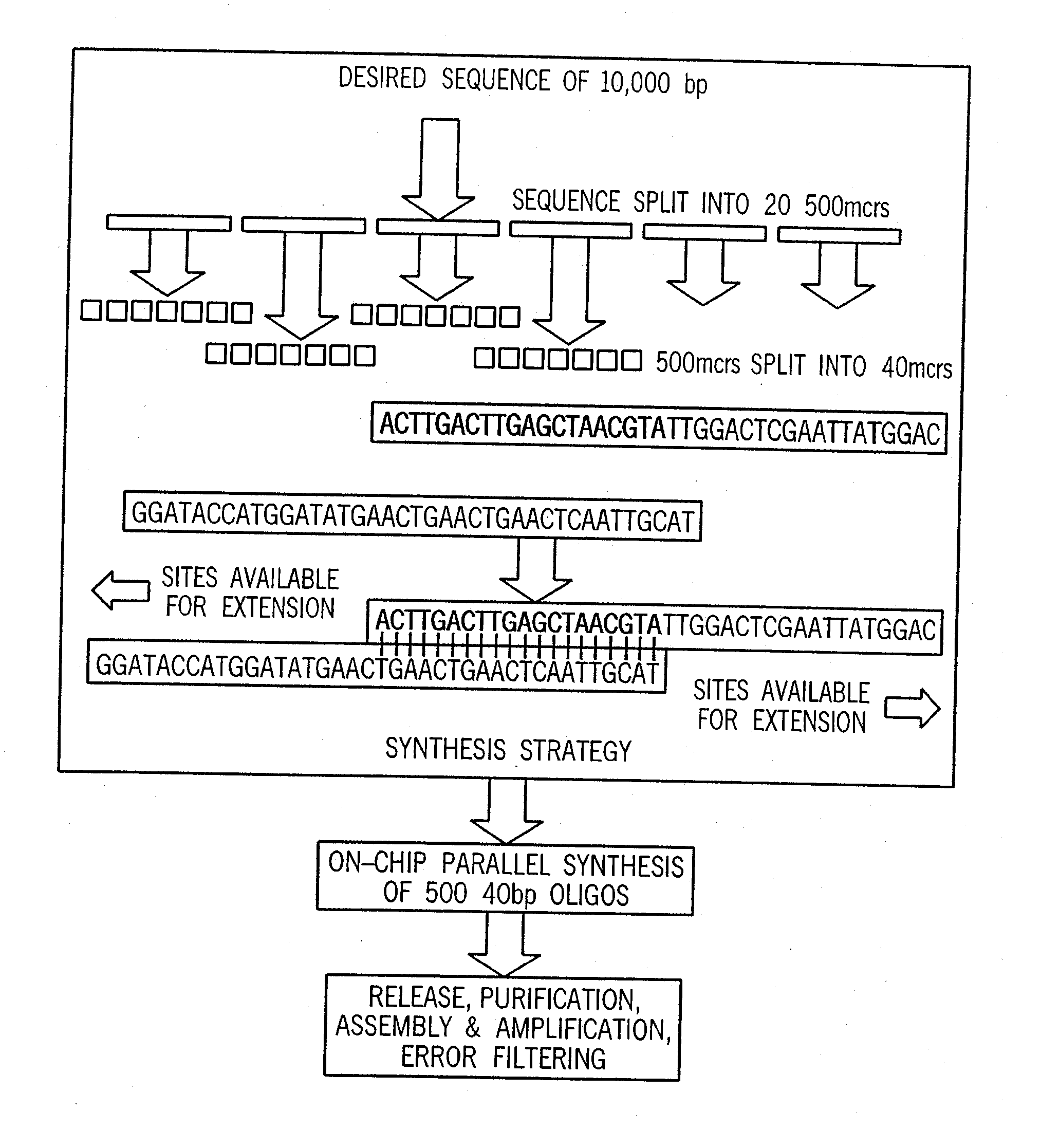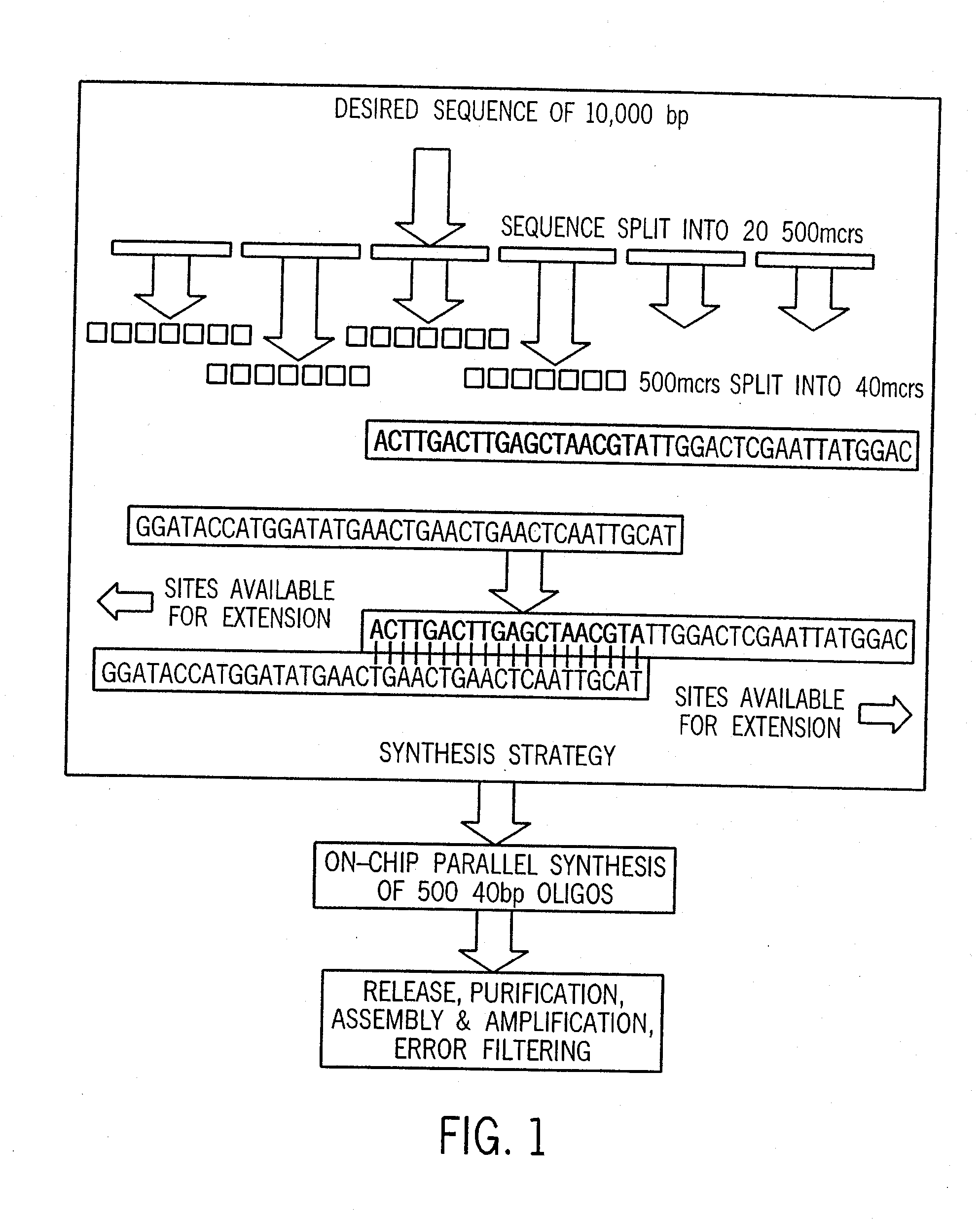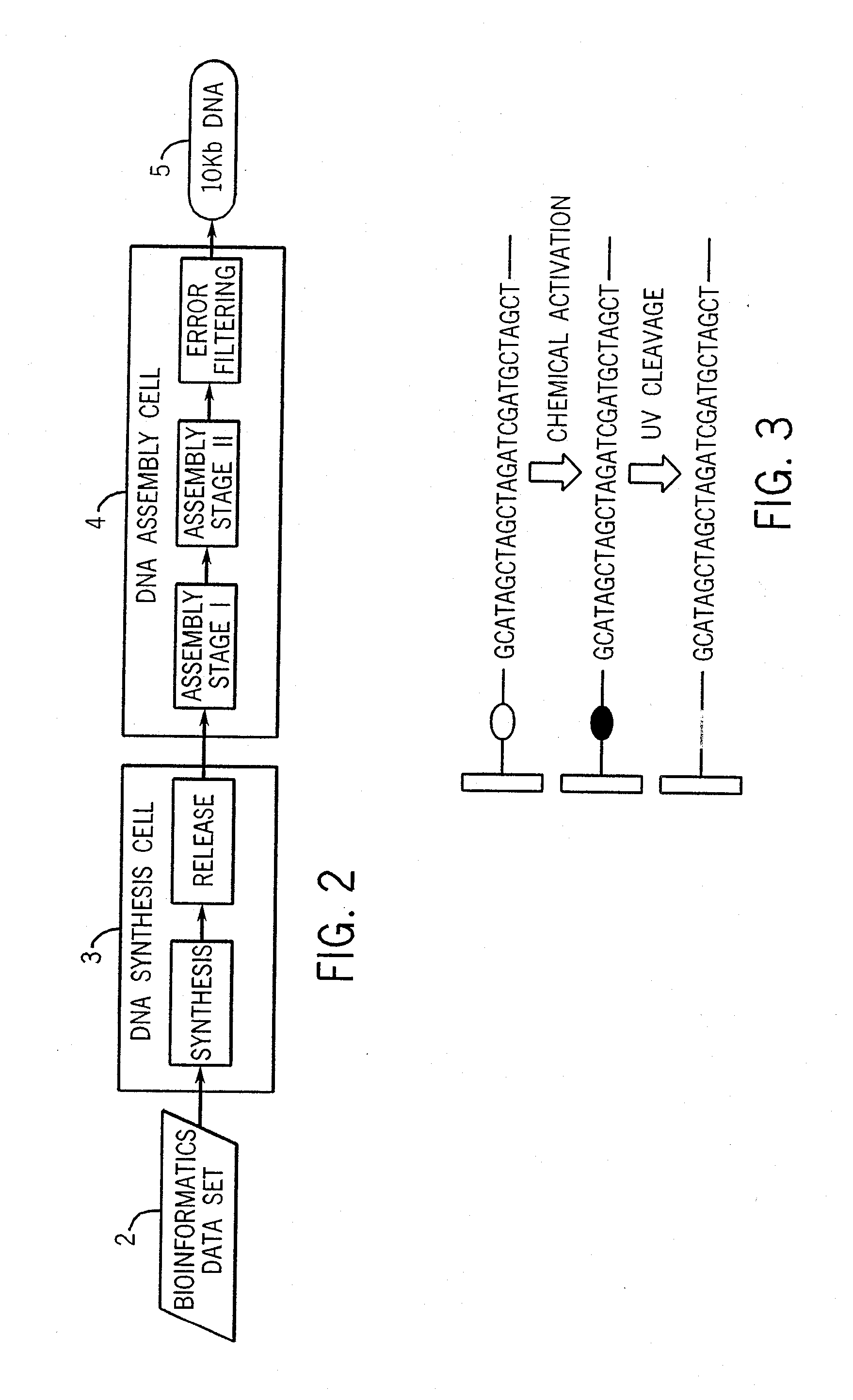Method and system for the generation of large double stranded DNA fragments
a technology of double stranded dna and synthesis method, which is applied in the field of biological sciences, can solve the problems of low fidelity, uneconomical approaches for routine synthesis of genes for research and clinical purposes, and uncertainty regarding the amount and relative proportion of failure sequences on the chip surfa
- Summary
- Abstract
- Description
- Claims
- Application Information
AI Technical Summary
Benefits of technology
Problems solved by technology
Method used
Image
Examples
Embodiment Construction
[0045] For purposes of exemplifying the invention, FIG. 1 illustrates in summary form a process by which a desired target sequence of, e.g., ten thousand base pairs (bp) forming a desired set of genes can be synthesized. It is understood that this example is provided as a representative case, and that the invention is not limited to such examples. To develop the synthesis strategy (using bioinformatics computer software algorithms as discussed further below), the desired target sequence is analyzed and split (for the 10,000 bp example) into 20 intermediate sequences of 500 bp each, and the 500 bp intermediate sequences are then split into a total of 500 subsequences of 40 bp (25 subsequences for each intermediate sequence), which are lengths that can be conveniently synthesized using automated oligonucleotide synthesis techniques. After the synthesis strategy has been developed, parallel synthesis of the 500 specified 40 bp oligonucleotides is carried out, followed by selectively se...
PUM
| Property | Measurement | Unit |
|---|---|---|
| wavelengths | aaaaa | aaaaa |
| wavelength | aaaaa | aaaaa |
| optical path | aaaaa | aaaaa |
Abstract
Description
Claims
Application Information
 Login to View More
Login to View More - R&D
- Intellectual Property
- Life Sciences
- Materials
- Tech Scout
- Unparalleled Data Quality
- Higher Quality Content
- 60% Fewer Hallucinations
Browse by: Latest US Patents, China's latest patents, Technical Efficacy Thesaurus, Application Domain, Technology Topic, Popular Technical Reports.
© 2025 PatSnap. All rights reserved.Legal|Privacy policy|Modern Slavery Act Transparency Statement|Sitemap|About US| Contact US: help@patsnap.com



